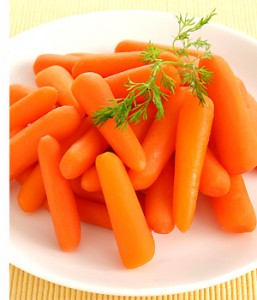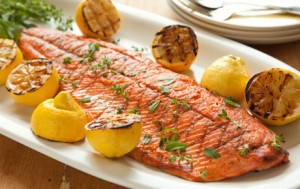As the saying goes, “you are what you eat.” But when it comes to healthy teeth, “you are what you chew.” According to the American Academy of Cosmetic Dentistry (AACD) certain foods naturally cleanse, brighten, and defend against bacteria that can harm your teeth and gums.
“The teeth and gums mirror what’s going on in the rest of your body. Therefore, what you consume influences the health of your smile,” said Dr. Shawn Frawley, a cosmetic dentist and AACD member. In contrast, some foods and lifestyle habits such as drinking coffee and tea as well as smoking can cause discoloration or the yellowing of your teeth.
Consumers are very interested about having a healthy, bright smile. According to an AACD survey, virtually all adults (99.7%) surveyed believe a healthy smile is socially important, and nearly three-quarters (74%) of adults feel an unattractive smile can hurt their career success.
To deliciously achieve a healthier, whiter smile, try these 10 foods suggestions from the AACD:
Pineapples can help whiten teeth. Research shows that the enzyme bromelain in pineapples acts as a natural stain remover, according to Dr. Frawley. Bromelain also helps break up plaque, the sticky film of bacteria that accumulates on your teeth. The bacteria in plaque produce acids that can erode the enamel of your teeth and lead to dental caries.
 Ginger acts as an anti-inflammatory to support healthy mouth tissue. Since periodontal disease is an inflammatory disease that causes the loss of bone and supportive connective tissue in your mouth, ginger can spice up your foods while also acting as an anti-inflammatory.
Ginger acts as an anti-inflammatory to support healthy mouth tissue. Since periodontal disease is an inflammatory disease that causes the loss of bone and supportive connective tissue in your mouth, ginger can spice up your foods while also acting as an anti-inflammatory.
Carrots contain vitamin A, which is needed for healthy tooth enamel. Eating them raw stimulates saliva, your mouth’s natural cleanser. In fact, chewing any crunchy vegetable will naturally cleanse your teeth. Try this Carrot-Pineapple Ginger Salad from the AACD.
Basil is a natural antibiotic that reduces bacteria in the mouth. According to Dr. Frawley, basil’s essential oils, rosmarinic acid, linalool, and oleanolic acid inhibit the growth of bacteria in the mouth.
Cheese is rich in protein, calcium, and phosphorus, all of which can help buffer the acids in your mouth. Calcium and phosphorus also assist in the remineralization or repairing of your teeth. Enjoy reduced fat cheese to minimize heart-unhealthy saturated fat in your diet.
Sesame seeds help “scrub” away the plaque on your teeth. Chewing nuts can also provide this coarse, scrubbing action. Sesame seeds also contain bone and teeth-strengthening calcium.
Shitaki mushrooms contain a compound called lentinan, which inhibits bacteria from growing in your mouth.
Onions contain the sulfur compounds, thiosulfinates and thiosulfonates, which reduce bacteria that cause tooth decay, according to Dr. Fawley. Eating them raw is a must as cooking will destroy these tooth-friendly compounds. Don’t like onions? Garlic also contains these sulfur compounds.
according to Dr. Fawley. Eating them raw is a must as cooking will destroy these tooth-friendly compounds. Don’t like onions? Garlic also contains these sulfur compounds.
Salmon not only provides calcium but also vitamin D, another nutrient needed for healthy bones and teeth.
Broccoli contains iron which helps form an acid-resistant film or barrier that can protect the enamel of your teeth, according to Dr. Fawley.
For more food recommendations and recipes, click here for the AACD’s free Recipes for a Healthier Smile booklet.
Follow Joan on Twitter at: joansalgeblake

